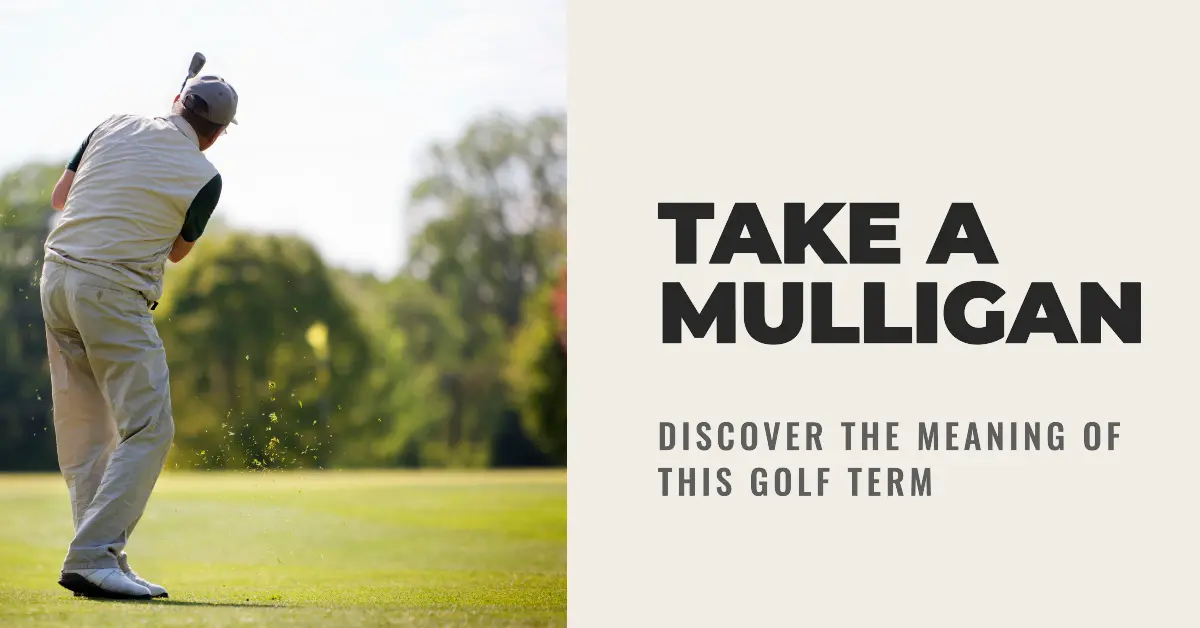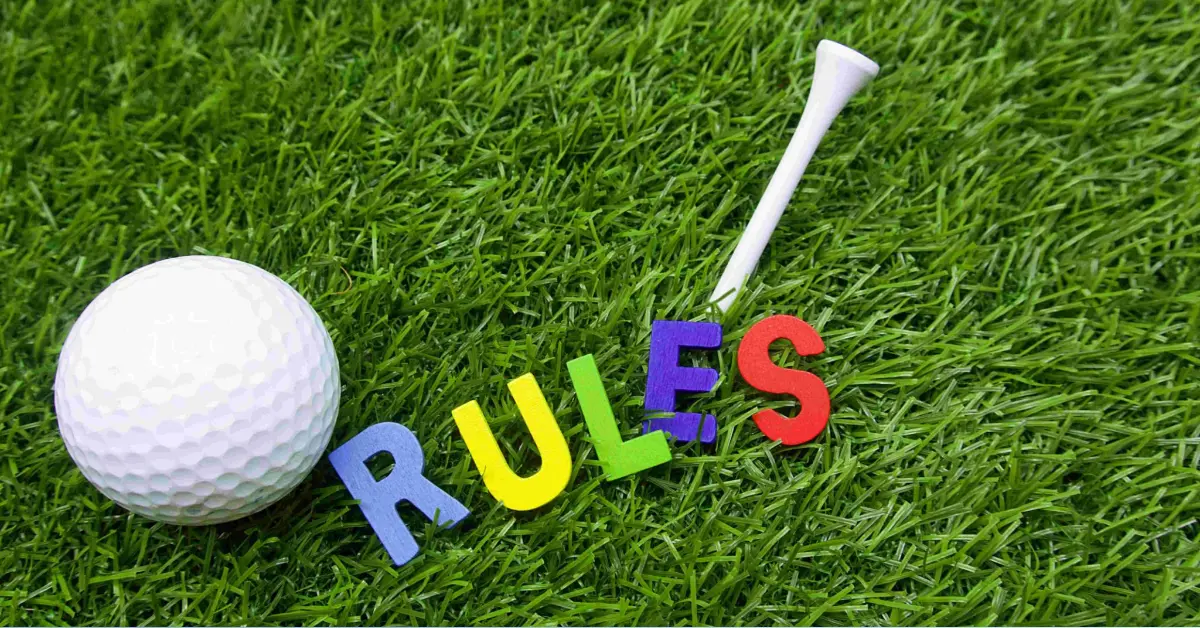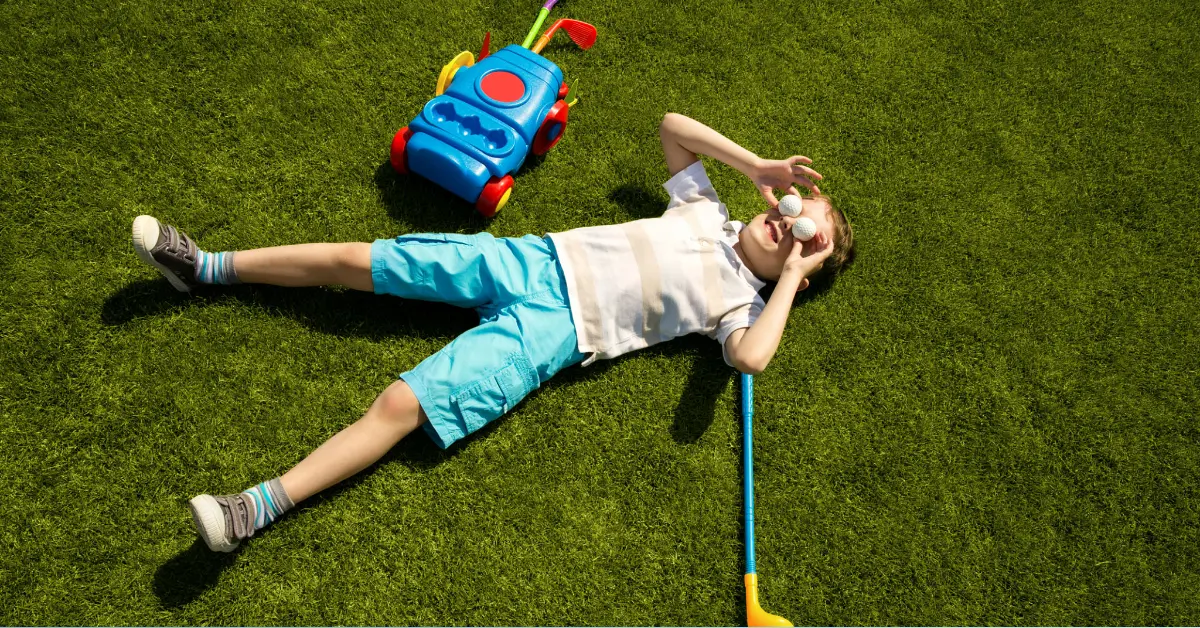The golf glossary is quite extensive, with some terms being essential to the game and others being relatively uncommon. The golf mulligan falls somewhere in the middle because it is not used in official games but can be used in casual rounds.
What exactly is a golf mulligan?A mulligan is a golf term that refers to a retake of a tee shot. It is not used in professional golf or official amateur competitions. However, with a collective agreement, it may be permitted in casual games. If a player uses a mulligan, the retake shot must be added to his score.
In this article, you will learn the rules of mulligans in golf as well as reverse mulligans.
By the end of this post, you’ll understand everything there is to know about these golf shot terms driver retakes, including why they are called what they are.
What Is the Meaning of a Mulligan?

A “Mulligan” in golf is named after John A. Mulligan, also known as Buddy Mulligan. In the 1930s, he worked as a locker room attendant at Essex Fells Country Club. Because he would retake shots, especially approach and tee shots, retakes became synonymous with his name in golf.
The fact that a locker room attendant can be immortalized in golf history demonstrates the sport’s power. Mulligan surrounded himself with powerful people, and his distinct approach to the game earned him a long-lasting, albeit unflattering, legacy.
If you don’t want to be associated with retakes, use Mulligans sparingly and even consider reverse Mulligans.
However, if you’re not satisfied with a single origin story, keep reading.
The History of the Golf Term Mulligan

The internet is littered with various theories about how the term “mulligan” came to be coined. The majority of them, however, centre on two central characters named Mulligan.
Nobody knows for sure which of these stories is true, but they’ve become so popular that they can’t be wrong.
We’ll try to summarize the various stories, beginning with David Bernard Mulligan, a Canadian amateur golfer and hotelier who many believe popularized the term in the early 1920s.
The USGA documents three versions of David Bernard Mulligan’s story…
The First Three Origin Stories

Mulligan was playing recreational golf one day when he hit a poor drive off the first tee. To correct his error, he simply teed up again and hit another ball. He turned and told his amused playing partners that his second shot was a “correction shot.”
This correction shot quickly gained popularity and was dubbed a golf mulligan.
This theory was based on Mulligan’s bumpy ride to a Montreal course. The drive was so rough that Mulligan was shaken even before he reached the first tee. As a result, his teammates allowed him to take a second shot.
The third story incorporates elements from the first two.
It focuses on Mulligan arriving late on the course one day and being too hurried to take the first shot. He needed to hit another shot because of the rush.
Thus, the term “mulligan” was coined in golf.
In a 1952 interview with Don Mackintosh, Mulligan seemed to confirm these stories.
“I hit an almost accurate ball off the first tee one day while playing with three of my friends – it was long enough but not as straight as I would have liked.” I became so enraged with myself that I dropped another ball on the spur of the moment. The other three players were perplexed, and one of them asked what I was doing. Without thinking, I replied that I was taking a mulligan, or a correction shot. People began to seek an extra free shot on their first tee after that, and it quickly became an unwritten rule in golf.”
– Mulligan, David Bernard
Fourth Origin Story

Another well-known story is that of John A. “Buddy” Mulligan, a locker room attendant at Essex Fells Country Club in New Jersey in the early 1930s.
Some players persuaded Mulligan to join their game one day. Mulligan was mentally prepared to play after working all day, and the price was a poor opening tee shot.
According to legend, he asked his teammates for a do-over because they had been practicing all morning and he hadn’t. They agreed, and the story quickly spread to other members, who used it in their games.
How Many Strokes Are In A Mulligan?

A mulligan is a single-stroke retake that is typically reserved for poor tee shots and approaches. A game can have multiple mulligans, but each one has only one shot.
Mulligans are limited to one per hole and are rarely permitted to exceed two in a single round.
Mulligans should not be confused with handicaps, despite the fact that both are informal accommodations for poor play. While using your handicap allowance is simple, using mulligans is more difficult.
Understanding the Mulligan rules will allow you to use yours more effectively.
9 Golf Mulligan Rules

Mulligans are not governed by immutable laws because they are used in informal games. With the agreement of your peers, you can override almost every “rule” of a mulligan. This emphasizes the importance of mutual agreement in mulligans, as it is also their first rule.
1. Mulligans are decided upon prior to the game.
You cannot claim a mulligan on the back nine unless you have agreed on their validity prior to the game.
The main reason for the pre-game agreement is that both players should be able to request a mulligan at any time during the game.
If your opponent hasn’t claimed a mulligan because he thought there were no retakes, claiming one later is unjust.
2. You may not be granted a Mulligan unless your opponent agrees.
A mulligan cannot be used against an opponent’s will because it is an accommodation rather than a right. However, if a group decides to use mulligans in a round, no one can later disallow them.
3. Mulligans are only permitted on tee shots (drives).
You cannot retake shots when you are close to a hole, even if your opponent has agreed to one or two Mulligans in a round.
Sure, your opponent can accept retakes on short-distance putts, but that isn’t what a mulligan is.
4. If permitted, you may use a mulligan on the fairway.
Mulligans can only be used off tees, but in some cases, they can also be used from the fairway. If a fairway mulligan is available to one player, it is available to all players.
It is preferable to discuss this before a game for the sake of fairness.
5. You could balance a Mulligan by allowing your opponent equal time.
Giving everyone an equal retake allowance is one way to make a mulligan fair. To keep the game fair, not everyone must use theirs.
The fact that everyone has the option makes it fair for any player in the group to use it.
6. You may be able to balance a Mulligan by accepting a Reverse Mulligan.
You can agree to the reverse mulligan rule if you believe that one person using a mulligan is unfair when others do not require retakes.
Any player who uses a mulligan must use a reverse mulligan, which is a forced retake of a good shot, according to this rule.
7. You Must Make Up For A Mulligan With An Extra Point
You can retake a bad shot, but the extra shot must be added to your score. Mulligan is intended to compensate for a poor trajectory and resulting score stack.
So, if you overshoot a ball and may need to take seven additional shots to get it to the putting surface, you can simply use a mulligan and retake the shot.
After that, you won’t need as many shots to get closer to the hole. However, you must include the extra shot in your score.
8. Only one mulligan is permitted per hole.
You can’t have two Mulligans for the same hole, by definition.
A mulligan is a type of retake that is only available for long-distance shots from the farthest practical point from the upcoming hole.
9. You should only use two Mulligans per round.
In informal games, this is the least enforceable and most overwritten rule. Nonetheless, it appears that with the agreement of your peers, you can use one Mulligan on the front nine and one on the back nine.
If you want more Mulligans in a game, you must specify the exact number and get everyone’s approval before the round begins.
When Putting, Can You Use A Mulligan?

Your group may agree to accept putt retakes, but those retakes cannot be referred to as Mulligans. Mulligans are only available for tee shots and cannot be used for putting.
Retakes from the fairway can be incorporated into the definition of a Mulligan, but retakes cannot be included.
In Golf, What Is A Reverse Mulligan?

In golf, a reverse mulligan is a special permission granted to a golfer to request a retake of a good long-distance shot. It can make a round more exciting and even out any advantage gained from a mulligan.
A reverse mulligan follows the same rules as a mulligan but with a change in consent. A reverse mulligan cannot be called from the fairway if a group agrees that a mulligan can only be used for tee shots.
If there are two mulligans in a round, there can also be two reverse mulligans. Reverse mulligans, like mulligans, are subject to mutual agreement. Their rules can also be overwritten with mutual agreement.
Mulligans are not permitted in some games, but reverse mulligans are permitted. As previously stated, forced retakes can be used to make a game more fair or exciting. In games where the only retakes are forced, the reverse Mulligan is known as a Gilligan.
Do you get a Gilligan for every Mulligan?

It is not necessary to make Gilligans proportional to mulligans in a round.
The number of Gilligans and Mulligans is determined before the round and is at the discretion of the players. Retakes can be used during a round as long as they are mutually agreed upon.
In a typical round, you can use a reverse mulligan (or Gilligan) to force your opponent to retake a good shot only if they have used a mulligan to retake a bad shot.
However, if your group agrees that every player can be forced to retake two driver shots during a round, it makes no difference whether the game has a mulligan allowance.
A reverse mulligan is similar to a reverse handicap in that it is the polar opposite of the standard concept but does not rely on it for survival.
You can play a round of golf using only the reverse handicap without using the regular handicap system.
Similarly, you can play a round of golf with only reverse Mulligans, with no player receiving any Mulligans.
Mulligan vs. Handicap: What Are the Differences?

The similarities between mulligans and handicaps do not stop there. Both concepts have reversals. Nonetheless, there are significant differences between the two allowances, which is why they should not be confused.
A mulligan is similar to a golf handicap in the following ways:
- Both are restricted to amateur competitions – Mulligans and handicapping are not used in professional golf.
- Both can lower your score – When used correctly, a mulligan can lower your score. A handicap reduces it literally.
- Both rely on mutual agreement – you cannot use a mulligan or your handicap without your peers’ permission. You cannot compel your group to play without handicaps and mulligans.
Differences between a mulligan and a handicap:
- A mulligan allows you to retake a shot, reversing all of the consequences of a bad shot. A handicap allows you to lower your score by subtracting it from your total score.
- Handicap is essential in amateur golf – Although handicap is not used in professional golf, it is an important part of recreational golf. As a result, it is permitted in the majority of amateur tournaments and official events. Mulligans are not permitted in official amateur competitions.
- There is a penalty for using a mulligan – when you use one, you must add one to your score. There is no such penalty with the handicap system.
- They are not used at the same rate – Every hole has a handicap allowance, but mulligans are nine times less common than handicap deductions.
Last Words on Golf Mulligans
A mulligan is the name given to discretionary retakes of tee shots in golf. The term was coined by John A. “Buddy” Mulligan, a golf club locker attendant known for retaking driver shots.
The Mulligan has no standing in official professional or amateur golf events.


